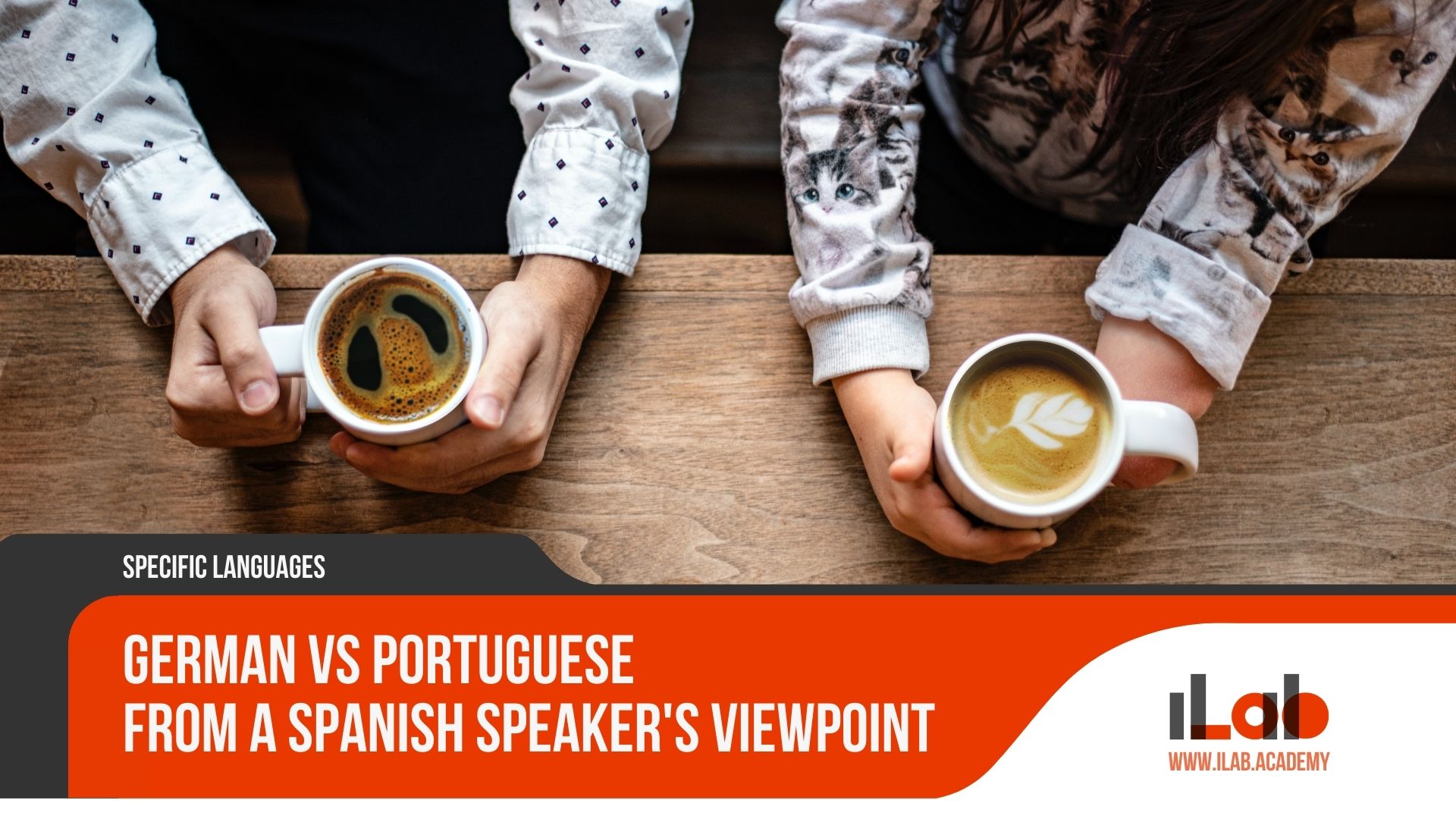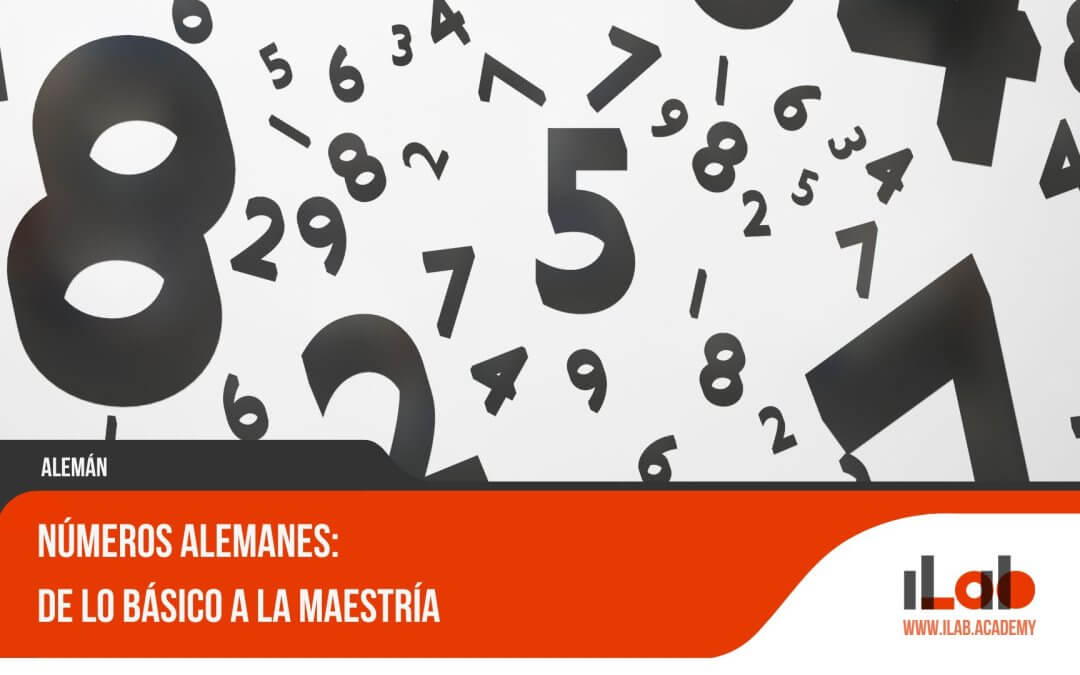Table of contents
The comparative linguistic journey between German and Portuguese through the lens of a Spanish speaker offers a unique vantage point that transcends mere vocabulary and syntax, venturing into the realms of phonetics, grammar, and cultural idiosyncrasies. As Spanish, a Romance language with Latin roots, stands at this linguistic crossroads, it serves as a touchstone for understanding the divergent paths taken by German, with its Germanic lineage, and Portuguese, a sibling in the Romance language family. This intersection not only reveals the shared heritage and stark divergences between these languages but also poses intriguing questions about the cognitive and communicative experiences of Spanish speakers who navigate these linguistic terrains. The ensuing discussion aims to dissect these relationships methodically, examining how a Spanish speaker’s inherent linguistic framework could potentially ease or complicate the acquisition and understanding of German and Portuguese. In tracing these connections and disparities, we uncover implications that reach far beyond grammar textbooks and language labs, extending into the spheres of cultural exchange and global diplomacy.
Key Takeaways
- German and Portuguese have different linguistic lineages, with German having Germanic roots and Portuguese having Romance roots, which can provide Spanish speakers with contextual insight into their own language.
- Spanish speakers can leverage their existing linguistic skills when learning German and Portuguese, as there are notable phonetic similarities and differences between the three languages.
- Spanish speakers may encounter both difficulties and simplicities in the grammatical and syntactical layouts of German and Portuguese, with some areas overlapping with Spanish and others being distinct.
- Prior knowledge of Spanish can be more helpful in acquiring vocabulary in Portuguese due to the crossover of Latin-based vocabulary, but caution should be exercised with false cognates.
Tracing Linguistic Lineages: Germanic Roots Meets Romance Branches
While both German and Portuguese stem from the broad Indo-European language family, German traces its roots to the Germanic branch, whereas Portuguese, like Spanish, evolves from the Romance branch, derived from Latin. This linguistic divergence is pivotal for Spanish speakers to comprehend as they embark on the journey of learning either language.
The Germanic languages, which include English, Dutch, and Swedish, among others, derive from a separate ancestral tongue, Proto-Germanic. German, therefore, possesses distinct linguistic features not found in Romance languages. These characteristics include a different system of sounds, verb conjugation patterns, and case usage, which can present a substantial learning curve to those accustomed to Romance languages.
On the other hand, Portuguese shares a common lineage with Spanish, as both languages emerged from Vulgar Latin, the colloquial form of Latin spoken by the common people of the Roman Empire. Due to this shared heritage, Portuguese and Spanish have numerous similarities in vocabulary, grammar, and syntax, making it generally easier for Spanish speakers to attain proficiency in Portuguese. The two languages are often mutually intelligible to a certain extent, although differences in pronunciation and usage can still pose challenges.
Understanding the historical and linguistic lineages of German and Portuguese enlightens Spanish speakers about the nature of the languages they may wish to learn. It sets a foundation for appreciating the linguistic distance they must traverse in mastering German, a language outside their native linguistic branch, compared to the relative familiarity they may find in Portuguese. This insight is not only academically interesting but practically significant in guiding their expectations and learning strategies.
Phonetics and Pronunciation: A Comparative Approach
Having established the distinct linguistic heritages of German and Portuguese, it is essential to examine how these differences manifest in the realm of phonetics and pronunciation for Spanish speakers. The phonological systems of all three languages offer unique challenges and opportunities for learners, but understanding the specifics can greatly ease the language acquisition process.
When comparing phonetics and pronunciation among German, Portuguese, and Spanish, consider the following key points:
- Vowel Sounds: Spanish and Portuguese both have a five-vowel system, which can be comforting for Spanish speakers. However, Portuguese often nasalizes vowels, which is a feature not present in Spanish. German, on the other hand, has more vowel sounds, including rounded front vowels like ‘ü’ and ‘ö’, which do not exist in Spanish and can be particularly challenging to master.
- Consonant Pronunciation: German features a set of consonants like the guttural ‘ch’ and the frontal ‘pf’ that are foreign to Spanish speakers. Portuguese has distinct phonemes such as the ‘lh’ and ‘nh’ sounds, which, while not present in Spanish, are somewhat more accessible due to their similarity to palatalized sounds in other Romance languages.
- Prosody and Stress: The rhythm and intonation patterns of Portuguese are somewhat closer to Spanish, with both languages being syllable-timed. German, however, is a stress-timed language, which can make its rhythm seem more foreign and thus, more difficult for Spanish speakers to adopt.
Understanding these phonetic and pronunciation nuances is crucial for Spanish speakers aiming to learn German or Portuguese. By leveraging their linguistic background and focusing on these aspects, learners can more effectively bridge the gap between their native tongue and their new language.
Grammar and Syntax: Navigating Structural Complexities
The structural intricacies of grammar and syntax present a diverse landscape for Spanish speakers embarking on the study of German and Portuguese. Navigating through this terrain requires an understanding of how these languages compare both in rules and in exceptions. For a Spanish speaker, the German language poses a significant challenge with its three-gender system, four cases for nouns, and a propensity for compound words. Conversely, Portuguese grammar is more familiar, with its two-gender system and a closer resemblance to Spanish syntax.
In terms of verb conjugation, while both languages have their complexities, German conjugation is often more irregular, and the verbs position in a sentence can be perplexing due to the V2 word order rule. Portuguese verb conjugation follows patterns more similar to Spanish, although it has a greater number of verb tenses and moods that Spanish does not utilize as frequently.
The following table captures some of the emotional reactions a Spanish speaker might experience when confronting the grammatical nuances of German and Portuguese:
| German Grammar | Portuguese Grammar |
|---|---|
| Bewilderment at the four-case system | Relief in the familiar two-gender system |
| Frustration with separable prefix verbs | Joy in cognate verb recognition |
| Intimidation by the strict V2 word order | Comfort in similar sentence structure |
| Overwhelm with numerous irregular verbs | Confidence with more predictable conjugation patterns |
Understanding these complexities offers a roadmap for Spanish speakers. It enables them to anticipate which aspects of German or Portuguese may require more intensive study and which will likely be grasped with relative ease, thus fostering a more strategic and emotionally prepared approach to language learning.
Vocabulary Vistas: Cognates, False Friends, and Borrowings
Embarking on the journey through the lexicons of German and Portuguese, Spanish speakers will encounter a landscape rich with cognates, be wary of false friends, and recognize familiar borrowings. While Portuguese, as a Romance language, shares a closer vocabulary affinity with Spanish, German, with its Germanic roots, presents a distinct set of linguistic elements. Nevertheless, the global exchange of culture and language has sprinkled each with loanwords that may strike a chord of familiarity for Spanish speakers.
Here are key aspects of vocabulary to consider:
- Cognates: Spanish and Portuguese have a high degree of lexical similarity owing to their Romance language heritage. Words like “centro” (center), “importante” (important), and “familia” (family) are virtually identical across both. German, however, shares fewer cognates with Spanish, though some common European roots can lead to cognates like “hotel” or “hospital,” which are similar in all three languages.
- False Friends: These are words that look similar across languages but have different meanings. Spanish speakers must be cautious as Portuguese offers many: “rojo” means red in Spanish, while “roxo” means purple in Portuguese. German offers its own pitfalls, with “gift” meaning poison, not a present as in English or “regalo” in Spanish.
- Borrowings: Globalization has led to the adoption of foreign words into many languages. German has incorporated terms like “computer” and “internet,” much like Spanish and Portuguese. Conversely, German terms like “kindergarten” have been adopted into both Romance languages.
For Spanish speakers, leveraging cognates and recognizing borrowings can ease the vocabulary acquisition process, particularly in Portuguese. However, caution with false friends is essential to avoid misconceptions and ensure clear communication.
Learning Curves: The Spanish Speaker’s Path to German vs Portuguese
For Spanish speakers, diving into the intricacies of German and Portuguese presents distinct learning trajectories shaped by the relative linguistic distances from their native tongue. Spanish, being a Romance language, shares a closer lineage with Portuguese, also a Romance language, than with German, which is a Germanic language. This kinship manifests in numerous similarities in vocabulary, phonetics, and grammar, making Portuguese generally more accessible to Spanish speakers.
The learning curve for Spanish speakers approaching Portuguese is typically less steep. The shared Latin roots result in a plethora of cognates, aiding vocabulary acquisition. Moreover, the grammatical structures, such as verb conjugations and gender use, are often more relatable, with similar sentence constructions easing the transition for Spanish speakers. That said, Portuguese pronunciation can present difficulties, with specific nasal vowels and distinct phonemes not found in Spanish.
Conversely, German introduces a more formidable challenge. The language’s Germanic roots create a linguistic gap that is immediately evident in its syntax and vocabulary. The case system, with four cases (nominative, accusative, genitive, and dative), poses a particular hurdle, as this feature is largely absent in Spanish. Additionally, German word order, especially the placement of verbs, can be perplexing for learners accustomed to the more flexible Spanish syntax. The three-gender system and extensive use of compound words further contribute to the complexity of learning German.
Cultural Expressions and Idiomatic Intricacies
Delving into the idiosyncrasies of German and Portuguese, one quickly uncovers a trove of idiomatic expressions that are deeply rooted in the cultural nuances of their respective societies. These phrases often carry meanings that transcend their literal translations, offering a window into the values, humor, and historical context of the communities that use them. Understanding these expressions is not just about language proficiency, but about gaining cultural insight.
Here are some key points to consider when exploring cultural expressions and idiomatic intricacies:
- Cultural Significance: Idioms often reflect a society’s traditions and collective experiences. For example, in German, “Da steppt der Bär” literally means “There the bear dances,” used to describe a lively party or event, possibly echoing Germany’s past rural festivals. In Portuguese, “Pagar o pato” translates to “Pay the duck,” an expression used when someone takes the blame for something, which has its roots in a Portuguese game involving a duck.
- Language Learning: For Spanish speakers, immersing in these idioms can be both challenging and rewarding. While German might seem more distant due to its Germanic roots, Portuguese idioms might be more accessible because of the shared Latin heritage, yet both require cultural context to be fully understood.
- Communication Beyond Words: Idioms add color to conversation and are essential for fluent communication. They allow speakers to express ideas in a way that resonates on a cultural level, bridging the gap between mere language proficiency and true linguistic immersion.
For Spanish speakers venturing into the study of German and Portuguese, an appreciation for idiomatic language is crucial. It not only enriches their vocabulary but also deepens their connection with the culture, allowing for a more genuine and engaging interaction with native speakers.
Global Influence: The Spanish Speaker’s Advantage
Navigating the intricacies of global diplomacy, Spanish speakers who master German or Portuguese may find themselves at a significant advantage in various international sectors. The ability to communicate effectively in these languages opens doors to opportunities in trade, cultural exchange, and international relations. This is particularly evident when examining the global influence wielded by German- and Portuguese-speaking countries.
Germany, as Europe’s largest economy, is a pivotal player in global trade, finance, and politics. Portuguese, meanwhile, serves as a bridge to vibrant economies in Brazil and emerging markets in Africa. Proficiency in these languages enables Spanish speakers to engage with a broader network of global partners and to tap into the cultural and economic capitals of these linguistic spheres.
To convey a deeper meaning for the audience, consider the following table, which outlines key aspects of global influence and how Spanish speakers can benefit from learning German or Portuguese:
| Aspect | Advantage for Spanish Speakers |
|---|---|
| Diplomatic Relations | Direct communication with influential European Union members and Lusophone countries |
| Economic Opportunities | Access to job markets in robust economies like Germany and Brazil |
| Cultural Exchange | Enhanced understanding of diverse European and South American cultures |
| Educational Resources | Availability of scholarships and academic programs in prestigious German and Portuguese universities |
| Tourism Industry | Ability to cater to a wider range of tourists from affluent German-speaking regions and Portuguese-speaking countries |
Art and Literature: Windows to Language Appreciation
The tapestry of German and Portuguese literatures offers Spanish speakers a rich palette of linguistic nuances and cultural insights that transcend mere words on a page. Engaging with the works of seminal authors and poets, Spanish speakers can unlock a treasure trove of cultural heritage that is both distinct from and resonant with their own.
Understanding the literary landscapes of Germany and Portugal can be greatly rewarding for a Spanish speaker. Here are three key aspects of how art and literature can serve as windows to language appreciation:
- Historical Context: German literature, with its roots in medieval epics like “Nibelungenlied,” provides a historical backdrop that has evolved through the philosophical treatises of Kant and the stirring plays of Goethe. Portuguese literature, from the epic tales of LuÃs de Camões in “Os LusÃadas” to the modernist works of Fernando Pessoa, offers a reflection of the country’s maritime history and its complex identity.
- Cultural Reflection: Literature reflects the soul of a culture. By reading German and Portuguese texts, Spanish speakers can delve into the societal values, historical conflicts, and philosophical questions that have shaped these nations. This reflection can bring a deeper understanding of the similarities and differences between their cultures and the Spanish-speaking world.
- Linguistic Bridges: While the German language may present a steeper learning curve due to its structural differences from Spanish, both German and Portuguese arts contain linguistic bridges that facilitate language learning. Recognizing cognates and shared European influences can ease the transition and enhance vocabulary building.
For those who desire a profound understanding of German or Portuguese, exploring the masterpieces of their art and literature is not just a way to learn a language; it’s an invitation to experience the very essence of these cultures.
Future Prospects: German and Portuguese in the Lingua Franca Arena
While literature opens a window to the cultural and linguistic heritage of German and Portuguese, the future role of these languages on the global stage presents new avenues for Spanish speakers seeking linguistic expansion. The evolution of German and Portuguese as lingua francas is influenced by multiple factors, including economic shifts, geopolitical alliances, and cultural exchanges. German, as the most widely spoken native language in the European Union, maintains a stronghold in the fields of engineering, science, and philosophy, and its speakers are influential in European economic and political matters.
Portuguese, on the other hand, boasts a vast geographic dispersion, being the official language in nine countries on four continents. Its significance is magnified by Brazil’s growing economy and cultural influence, alongside the African Lusophone countries’ potential in the global market. Moreover, the Community of Portuguese Language Countries (CPLP) promotes the language’s international standing, potentially increasing its attractiveness to language learners.
For Spanish speakers, learning German or Portuguese can unlock professional opportunities and cultural understanding. German may offer advantages in the European job market and in academic research, while proficiency in Portuguese can enhance business prospects in emerging markets and understanding of diverse cultures. Additionally, technological advancements in language learning and digital communication have made both languages more accessible to a global audience.
As the world becomes increasingly interconnected, the importance of multilingualism cannot be overstated. Spanish speakers who choose to add German or Portuguese to their linguistic toolkit may find themselves well-equipped to navigate the complexities of the international scene, gaining a competitive edge in a world where the ability to communicate across cultural boundaries is more valuable than ever.
Frequently Asked Questions
How Do the Cultural Practices and Traditions of Germany and Portugal Influence Everyday Language Use Beyond Formal Idioms and Expressions?
Cultural practices and traditions deeply influence everyday language use in Germany and Portugal, extending beyond formal idioms. In daily interactions, these cultural nuances manifest in colloquialisms, humor, and etiquette that reflect each nation’s history and social norms. Understanding these subtleties is crucial for effective communication, as they inform the pragmatic use of language and foster a more profound connection with native speakers, enriching the language learning experience.
What Are Some Unique Language Learning Resources or Tools Tailored Specifically for Spanish Speakers Learning German or Portuguese?
Unique resources for Spanish speakers learning German or Portuguese include bilingual dictionaries, language exchange communities, and tailored smartphone apps. Platforms like Duolingo offer courses designed for Spanish speakers, while sites like Tandem facilitate conversational practice with native speakers. Additionally, immersion tools such as Spanish-German or Spanish-Portuguese books and media can significantly aid in understanding the nuances and context of vocabulary and grammar for effective language acquisition.
How Do the Regional Dialects Within Germany and Portugal Differ, and What Challenges Might They Pose for Spanish Speakers Learning the Standard Forms of These Languages?
Regional dialects in Germany and Portugal present distinct pronunciation, vocabulary, and grammar from standard German and Portuguese. For Spanish speakers, these variations may pose additional challenges in comprehension and communication. It is crucial to focus on the standard language initially while recognizing the value of dialects for cultural immersion and deeper linguistic proficiency. Exposure to dialects can eventually enhance understanding and adaptability in real-world interactions within these linguistic communities.
In What Ways Do German and Portuguese Languages Handle Humor, Sarcasm, and Wit Differently, and How Can Spanish Speakers Adapt to These Nuances?
German and Portuguese handle humor differently due to linguistic and cultural nuances. German humor often relies on precision and can be more direct, while Portuguese humor may be more contextual and expressive. Spanish speakers may adapt by learning the cultural contexts and idiomatic expressions specific to each language, enhancing their appreciation of humor and sarcasm while avoiding misunderstandings that can arise from direct translations or differences in cultural attitudes towards wit.
Are There Any Notable Differences in Body Language, Gestures, or Non-Verbal Communication Cues Between German, Portuguese, and Spanish That Spanish Speakers Should Be Aware of When Conversing With Native Speakers?
In communication, body language and non-verbal cues play crucial roles. Spanish speakers should note that gestures can vary significantly across German, Portuguese, and Spanish cultures. For instance, direct eye contact is common in German interactions, while it may be less intense in Portuguese contexts. Understanding these differences is essential for effective cross-cultural communication, as misinterpretations can lead to misunderstandings or offense when engaging with native German or Portuguese speakers.
Conclusion
In conclusion, the comparative study of German and Portuguese through the lens of a Spanish speaker reveals a rich linguistic tapestry, underscored by distinct historical developments and structural features. While both languages offer unique challenges, they also provide opportunities for cultural and intellectual enrichment. The strategic mastery of these languages not only enhances cross-cultural communication but also contributes to a broader understanding of the global linguistic heritage shared within the Indo-European family.














